Investors universally acknowledge gold as a reliable asset for wealth preservation and shielding against financial crises. Its resilience in the midst of inflation, economic downturns, currency instability, market crashes, and societal unrest has been consistently demonstrated. Looking into the historical and economic dynamics of gold enhances one’s investment approach.
The contemporary gold market spans the entire globe, with gold deeply embedded in every economy worldwide. Since the early 1970s, the annual volume of gold acquisitions has tripled, showcasing its enduring popularity. Each region has distinct cultural and financial motivations for investing in this precious metal, contributing to the diversity and stability of the global gold market and ensuring sustained demand. The remarkable surge in gold demand in Eastern regions mirrors their flourishing economies and the collective preference for a dependable, portable, and aesthetically pleasing form of wealth storage.
Nearly half of the world’s gold demand is attributed to gold jewelry, serving aesthetic, cultural, and investment purposes globally. Gold jewelry is assessed in terms of weight using troy ounces and in terms of purity using carats.
Gold has demonstrated its status as a reliable safe haven asset, capable of enhancing diversification and safeguarding investment portfolios. It functions effectively as a hedge against stock market downturns, surging inflation, and unpredictable monetary policy fluctuations. Moreover, physical gold stands out as a commendable option for long-term wealth preservation.
The currency markets are undergoing an unprecedented and deafening paradigm shift. Central banks are safeguarding their reserves by engaging in substantial gold purchases and securely storing it within their own borders. In 2021, marking the 12th consecutive year of net purchases, central banks globally augmented their reserves by 463 tons of gold, representing an 82% increase compared to 2020.
Gold boasts a diverse array of industrial applications, with the electronics sector dominating, comprising 80% of its industrial usage. Its exceptional physical attributes render it indispensable in the manufacturing of electronics components found in smartphones, automobiles, and semiconductors. With the world’s increasing connectivity, the demand for gold in industrial processes is expected to surge accordingly.
Gold mines contribute roughly 75% of the world’s annual gold supply, with operations spanning various locations globally. Although mine production has notably surged since 2008, sizable new discoveries are becoming increasingly scarce. Mining operations operate at a deliberate pace, with the journey from discovery to production often spanning decades. Consequently, gold extracted through mining is not immediately responsive to price fluctuations.
The demand for gold surpasses the output from mines, requiring the supplementation of supply through the recycling of existing gold reserves. Primarily sourced from jewelry, recycled gold accounts for at least 90% of the total. Unlike gold obtained through mining, recycled gold is highly responsive to fluctuations in price and other market disruptions.
Given the finite nature of its supply and the continual rise in demand, gold prices are poised to continue their upward trajectory.
Since ancient times, roughly 205,000 tons of gold have been mined, with two-thirds of this total extracted since 1950. This breakdown of 205,000 tons is as follows:
Jewelry – 46%, Bar and Coins – 22%, Central Banks – 17%, Other – 15%
Around 600 BC, King Alyattes of Lydia, an ancient kingdom in present-day Turkey, oversaw the first recorded mint, officially declaring gold as money. Coins made of an alloy of silver and gold called electrum were minted, bearing stamped images denoting their denominations.
As Near East empires expanded and engaged with Europe, the use of gold coins proliferated. Serving as a reliable medium of exchange across borders, their utilization persisted and broadened over time. In 1792, the establishment of the United States mint and the introduction of the US dollar were enshrined in the Coinage Act.
The adoption of the ‘classic’ Gold Standard in 1879 marked a significant milestone. This system saw countries pegging the value of their currencies to a specified amount of gold, or to the currency of a nation adhering to this standard. Gold coins circulated domestically alongside coins of other metals and paper notes. Fixed exchange rates between participating currencies were established as a result.
Following the upheaval of World War II, the Bretton Woods system emerged, ushering in a more stable financial order with the US dollar as its focal point. The dollar was fixed to gold at a rate of US$35 per ounce, with other currencies pegged to the dollar at adjustable rates.
However, on August 15, 1971, in response to domestic inflation concerns and to deter foreign governments from exchanging their dollars for gold, President Richard Nixon abandoned the gold standard, leading to the collapse of the Bretton Woods System.
For over 50 years, the United States has operated under a purely fiat monetary system, devoid of any objective anchor for currencies. National currencies now represent obligations owed to central banks. Faced with challenges such as hyperinflation and currency manipulation, nations are increasingly distancing themselves from the fiat dollar as the global trade standard. Consequently, the intrinsic value and demand for gold are experiencing a resurgence.
All the gold ever mined would fit into a crate 69 cubed feet.
24 karat gold is pure gold with no other metals. 18 karat gold is 75% gold and 25% some other metal like copper.
The largest gold coin ever made was cast by the Perth Mint in 2012. Weighing one ton and measuring 31.5 inches in diameter.
A “London Good Delivery Bar”, the standard unit of traded gold, is made from 400 troy ounces of gold.
The US Federal Reserve holds 6,700 tons of gold, in 530,000 gold bars.
There are 147.3 million ounces – around 4,600 tons – of gold stored in the US Bullion Depository at Fort Knox.
Even at only 10 parts of gold per quadrillion, the world’s oceans are estimated to hold up to 15,000 tons of gold.

Colonial Metals Group can help. To learn more about buying or investing in precious metals, or if you would just like to talk about the field, please reach out to us any time.

Use Colonial Metal Group’s knowledge to help you invest in precious metals, regardless of your situation. Simply put, we’re experts in the gold and silver markets. We help you meet your goals and beyond.

The statements made on this website are opinions and past performance is no indication of future performance or returns. Precious metals, like all investments, carry risk. Gold, silver and platinum coins and bars may appreciate, depreciate or stay the same depending on a variety of factors. Colonial Metals Group cannot guarantee, and makes no representation that any metals purchased will appreciate at all or appreciate sufficiently to make customers a profit. The decision to purchase or sell precious metals, and which precious metals to purchase or sell are the customer’s decision alone, and purchases and sales should be made subject to the customer’s own research, prudence and judgement. Colonial Metals Group does not provide investment, legal, retirement planning, or tax advice. Individuals should consult with their investment, legal or tax professionals for such services.